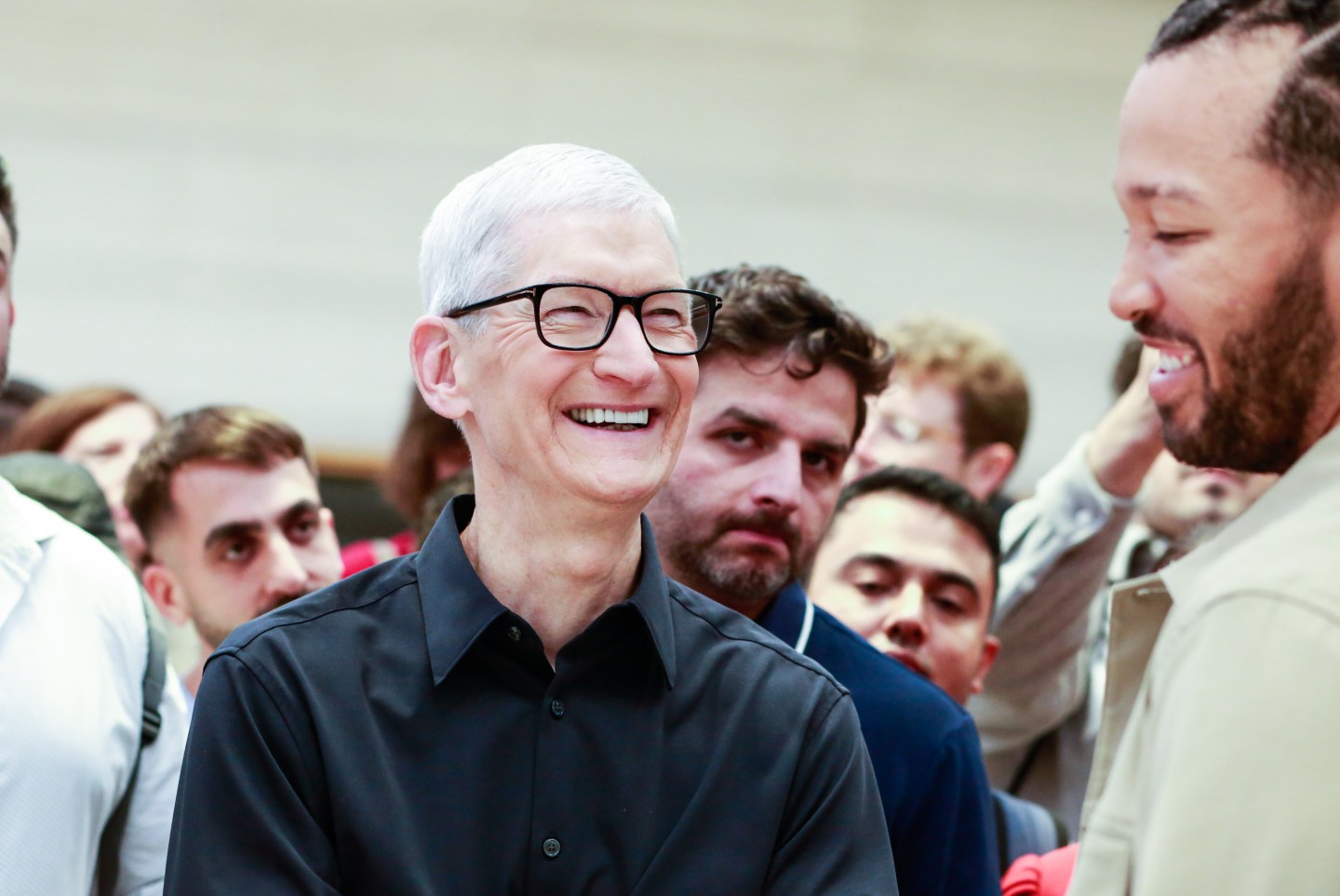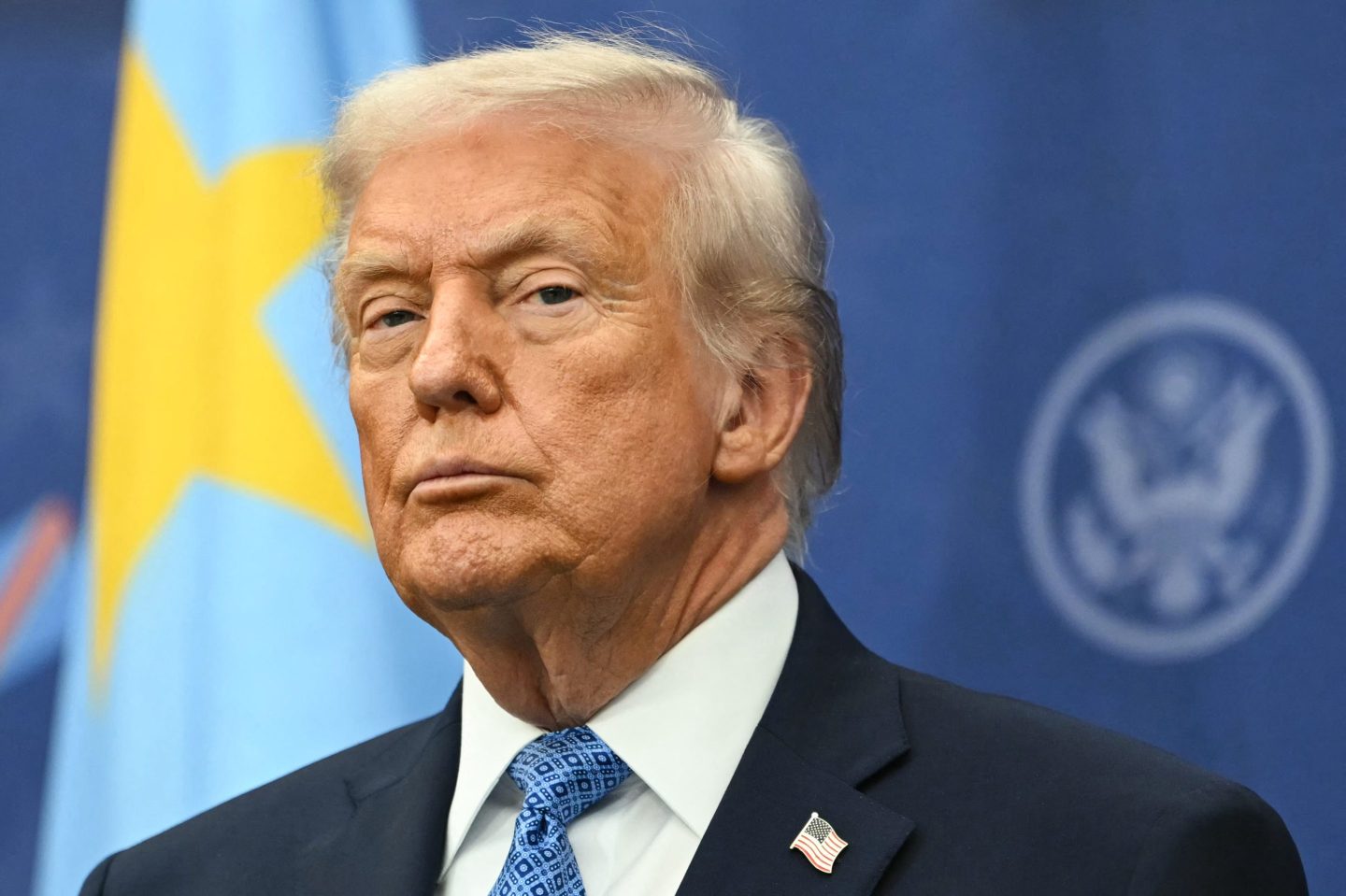Good morning. If you take a dark view of executive teams’ desire to deploy AI across their organizations, you’d assume that they’re keen to replace pricey humans—especially the ones who don’t report to the office every day, and especially those who aren’t full time.
So, pop quiz time: What percentage of remote labor tasks can today’s AI agents successfully automate today?
Take your best guess (then take a deep breath) and find the answer in “Endstop triggered.”
Have a wonderfully spooky weekend. —Andrew Nusca
Want to send thoughts or suggestions to Fortune Tech? Drop a line here.
Apple predicts estimate-topping iPhone sales

Apple said Thursday that it will sell more iPhones, and make more companywide revenue, than Wall Street expects during the holiday season.
CEO Tim Cook told Reuters that he expects iPhone sales in the current quarter to grow by double digits from the same time a year ago, thanks to strong orders for iPhone 17 models, besting analyst estimates of a 9.8% jump to $75.9 billion.
Cook also predicted that Apple's overall revenue would grow between 10% and 12% from the year-ago quarter, beating Wall Street’s expectations of a 6.6% jump to $132.5 billion.
Apple shares rose 4% in after-hours trading.
It’s not all rosy. Apple is still working through supply constraints and shipping delays for its popular devices, leading to the company missing analyst expectations for iPhone sales in the quarter ended Sept. 27.
Apple reported iPhone sales of $49 billion in its fiscal Q4, up 6%. Wall Street was looking for $50.2 billion.
The delays in China launching the new iPhone Air were especially notable, but Apple may catch up in its fiscal Q1.
“We're filling orders just as fast as we can," Cook told Reuters. "It's a good problem to have." —AN
Amazon shares soar as cloud biz logs 20% growth
For all that talk about the recent AWS outage, Amazon’s cloud computing business sure is going gangbusters.
The company reported third-quarter revenue for the AI-facilitating business of $33 billion, up 20% from the same period a year ago and more than one percentage point stronger than Wall Street was expecting.
Amazon shares jumped 11%, to as much as $255, in after-hours trading—an extraordinary symbol of how much investors are focused on AWS, even though the business represents less than one-fifth of Amazon’s total sales.
Speaking of which: Amazon reported Q3 earnings per share of $1.95 on total revenue of $180.2 billion, a 13% jump from a year ago. That topped Wall Street’s expected EPS of $1.58 on revenue of $177.8 billion.
Despite all of this, Amazon stock has substantially trailed that of some of its Big Tech peers this year. Amazon shares are up just 2% year-to-date, compared to Microsoft (20%) and Google (32%). —AN
Trump, Xi agree to unravel tech tariffs
In a long-awaited meeting in Busan, South Korea, the presidents of China and the U.S. made a yearlong trade truce that unwound many of the retaliatory measures they had implemented over the past year.
There is a laundry list of policy changes that directly affect the technology industry.
First: The countries will not continue their tit-for-tat escalatory tariffs.
Second: The U.S. will halve a blanket 20% import duty on Chinese goods that had been intended to penalize the country for fentanyl making its way to the U.S., bringing the overall U.S. tariff on many Chinese goods down to about 45%.
Third: China will suspend for one year its restrictions intended to throttle the U.S. supply of rare earth metals, used in an array of electronic goods.
Fourth: Both countries will not impose steep fees on ships built or owned by the other nation that arrive at domestic ports.
The countries also agreed on several nontech measures, e.g. soybean exports.
A pair of additional tech items arose in the meeting between China’s Xi Jinping and Donald Trump.
The leaders said they discussed semiconductors (e.g. Nvidia’s sale of AI chips in China) but offered neither specifics nor new agreements. And: The fate of TikTok’s U.S. business was expected to be on the agenda, but no deal emerged in the wake of the meeting. —AN
More tech
—U.S. mulls TP-Link ban. File another one under “national security risk.”
—Canva launches AI design modelversed in structure, layering, hierarchy, branding, and visual logic.
—Nvidia to invest in Poolside. Up to $1 billion, reportedly, in the French-American coding startup.
—Palantir CTO on the company’s moral view: “The West is a force for good. We believe in strengthening the legitimacy of these institutions.”
—OpenAI launches Aardvark, a cybersecurity agent to pressure test corporate defenses.
—Netflix announces 10-for-1 stock split. The company’s pre-split shares trade above $1,100.
—Meta issues bonds worth up to $30 billion. You know, that AI doesn’t pay for itself. (Yet!)
Endstop triggered
Answer: 2.5%.
According to Scale AI and the Center for AI Safety’s new Remote Labor Index (RLI), “across evaluated frontier AI agent frameworks, performance sits near the floor, with a maximum automation rate of 2.5% on RLI tasks.”
What kind of tasks did the index test? An array of real ones sourced from real freelance platforms spanning product design, graphic design, game development, audio/video—plus all manner of operations, marketing, data, research, writing, and administrative needs.
Of all the AI models tapped for the benchmark, the best-performing was Manus, from the Chinese-turned-Singaporean AI startup. Anthropic’s Claude, OpenAI’s ChatGPT, and Google’s Gemini rounded out the leaderboard.
But “here’s an interesting part,” says Dan Hendrycks, executive director of the CAIS. “Even though models fail at most of these projects, we’re seeing steady improvement. Newer frontier models consistently outperform older ones.” Onward and upward, I guess. —AN












